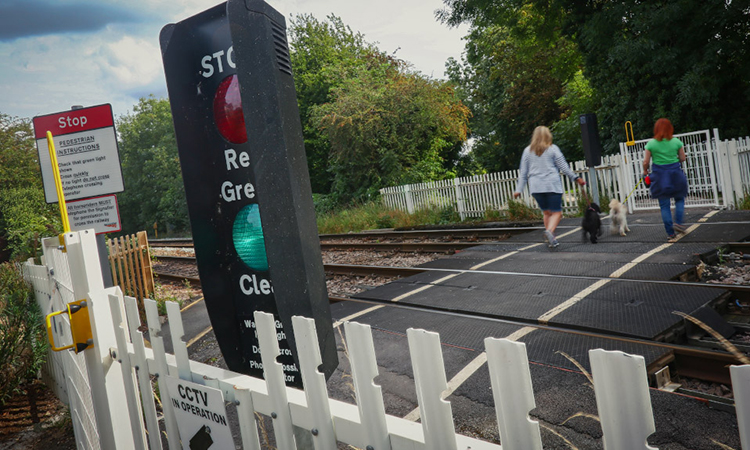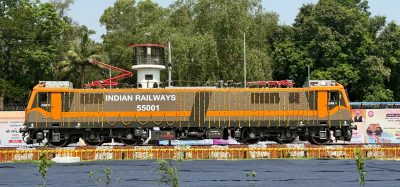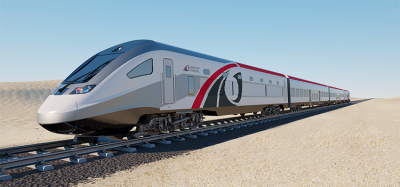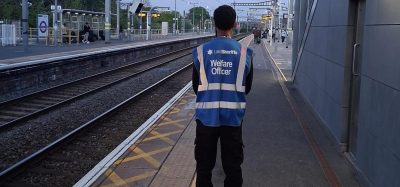ORR publishes new level crossing risk management guidance for UK railways
Posted: 15 June 2021 | Global Railway Review | No comments yet
ORR’s new guidance does not specify requirements or solutions, allowing for a proportionate, case-by-case approach to be made for each level crossing in the UK.


Credit: Office of Rail and Road
The Office of Rail and Road (ORR) has published new guidance to support Network Rail, heritage and other non-mainline railways, as well as local authorities, in the management of risks at level crossings.
‘Principles for managing level crossing safety‘ emphasises that risk should be reduced through the design of a level crossing or through an alternative way of crossing the railway, where this is reasonably practicable, and the importance of considering how level crossings are actually used.
There are currently just under 5,800 level crossings on the mainline railway, with around another 1,500 on heritage railways, and safety at these crossings has been improved in recent years.
ORR’s guidance supports a risk-based approach which ensures that cost is taken into account when considering safety measures, but it does not specify requirements or solutions, allowing for a proportionate, case-by-case approach to be made by duty holders.
To support the guidance, examples have been put together to show how the principles might be applied in practice:
- One scenario highlights a footpath level crossing, where plans to increase the speed and frequency of trains on the line sees new warning lights with an audible alarm installed to help users cross
- Another example highlights how a heritage railway lowered risks to users by carrying out a risk assessment to identify alternative ways of crossing the railway, resulting in a new pedestrian bridge and staffing of the level crossing for use by disabled passengers.
ORR’s new guidance follows a consultation in January 2021 that found that the industry welcomed the focus on managing level crossing risk in a collaborative way, recognising that level crossings are the interface between railway and highway.
ORR’s consultation also highlighted the need for the regulator to clarify its role in relation to level crossings, and it has updated its website to provide better signposting to the roles of other parties who have responsibilities at level crossings.
Ian Prosser CBE, HM Chief Inspector of Railways, ORR said: “With more than 7,000 level crossings in Britain, there is no ‘one size fits all’ approach to safety. Every level crossing is different, and risk assessments should take account of the circumstances of each one. We’ve acted on feedback from our consultation to improve the clarity of the principles and factors in the new guidance. Our guidance will help to support the industry to make informed decisions about managing level crossing risks and encourage a collaborative approach to improve safety for all level crossing users.”
The new principles mark a step change from the previous guidance, ‘Level Crossings: Guidance for Managers, Designers and Operators‘, also known as RSP7, which describes level crossing methods of operation and layouts. In time, RSP7 will be withdrawn from use.
In total, there are nine principles to help users of the guidance consider how to make crossings safe for the user by following their journey of using a crossing to help to identify hazards at a level crossing. There are also nine principles to guide risk control measures for a level crossing from the perspective of the railway, and five to control risks from a highway’s perspective, which includes preventing road traffic incidents at or near a level crossing.
The industry has welcomed the improved guidance to help to manage risks and make clearer the roles across industry.
Rob Wainwright, Head of Level Crossings at Network Rail and Chair of the Industry Level Crossing Strategy Group, said: “We welcome this update of the level crossing guidance and the move towards a more risk-based principles approach, and I’d like to thank ORR for allowing the wider level crossing community and stakeholders to engage and input into this process. Having worked with ORR on some of the case studies to come, I am in no doubt that they will be a great support in encouraging the risk-based approach required of us to effectively manage our level crossing estate. The principles will encourage more effective collaboration and greater innovation in level crossing risk management, which will ultimately reduce risk at level crossings in the future.”
Jay Heavisides, Principal Risk Analyst at the Rail Safety Standards Board (RSSB), said: “By adopting these principles, it will be easier for the rail industry to enhance safety at level crossings more efficiently and effectively. This progressive guidance is the result of really positive collaboration across the level crossing community, including Network Rail, ORR, local authorities and ourselves at RSSB.”
OUT NOW: The Definitive Guide to Rail’s Digital Future
The rail industry is undergoing a digital revolution, and you need to be ready. We have released our latest market report, “Track Insight: Digitalisation.”
This is not just another report; it’s your comprehensive guide to understanding and leveraging the profound technological shifts reshaping our industry. We move beyond the buzzwords to show you the tangible realities of AI, IoT, and advanced data analytics in rail.
Discover how to:
- Optimise operations and maintenance with real-time insights.
- Enhance passenger services through seamless, high-speed connectivity.
- Leverage technologies like LEO satellites to improve safety and efficiency.
Featuring expert analysis from leaders at Nomad Digital, Lucchini RS, Bentley Systems and more, this is a must-read for any rail professional.
Related topics
Related organisations
Network Rail, Office of Rail and Road (ORR), Rail Safety and Standards Board (RSSB)







